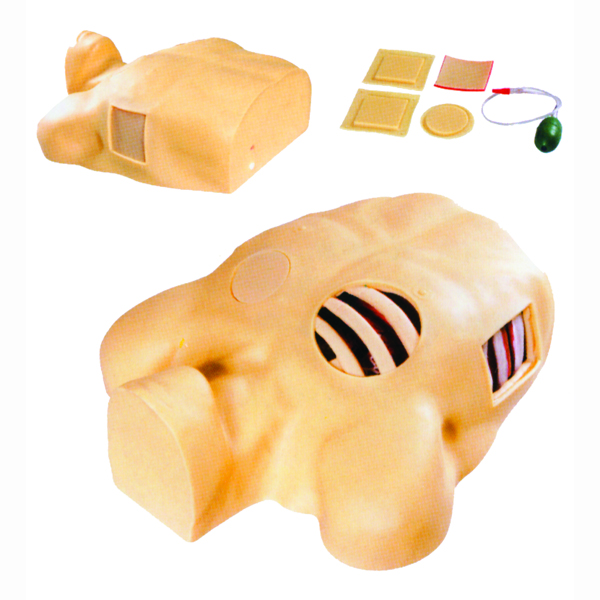

Article tag: Pleural puncture drainage model|
In the medical field, thoracic puncture drainage is a complex and critical technical operation, which requires medical personnel to have a high degree of professional knowledge and precise operational skills. With the development of medical simulation technology, thoracic pu...
In the medical field, thoracic puncture drainage is a complex and critical technical operation, which requires medical personnel to have a high degree of professional knowledge and precise operational skills. With the development of medical simulation technology, thoracic puncture and drainage model has become an important tool for medical personnel training, which enables medical personnel to practice repeatedly in a simulated environment and realize the leap from simulation to actual combat.

The primary value of thoracic puncture drainage model in training lies in its high degree of simulation. These models are able to simulate physiological features such as real chest structure, skin touch and fluid flow, providing a practice platform for medical personnel that is very similar to the actual combat environment. Medical staff can perform thoracic puncture, drainage tube placement and other operations on this platform to feel the real operating experience and feedback, so as to better master the operation skills.
Secondly, the pleural puncture drainage model has the characteristics of being reusable, which is crucial for the training of medical personnel. In the simulation training, medical staff can practice repeatedly, constantly correct their mistakes and deficiencies, and improve their operational skills. Moreover, due to the reusability of the model, healthcare organizations can reduce training costs and improve resource utilization.
In addition, the thoracic puncture drainage model also has safety and controllability. In the simulation training, medical staff do not need to worry about causing harm to real patients or causing medical disputes. At the same time, the model can simulate a variety of complex conditions and emergencies, so that medical staff can better cope with various challenges in training. This controllability allows medical personnel to continuously improve their emergency response capabilities in a safe environment.
In the leap from simulation to actual combat, thoracic puncture and drainage model provides important support and help for medical personnel. Through simulation training, medical personnel can master the operation process and skills of thoracic puncture and drainage, and improve their actual operation ability. When faced with real patients, healthcare professionals can more calmly respond to various situations to ensure the safety and health of patients.
In conclusion, thoracic puncture and drainage model has important value in the training of medical personnel. It can not only improve the operational skills and safety awareness of medical personnel, but also reduce training costs and improve resource utilization. With the continuous development of medical simulation technology, it is believed that thoracic puncture drainage model will play a more important role in medical education and clinical practice in the future.